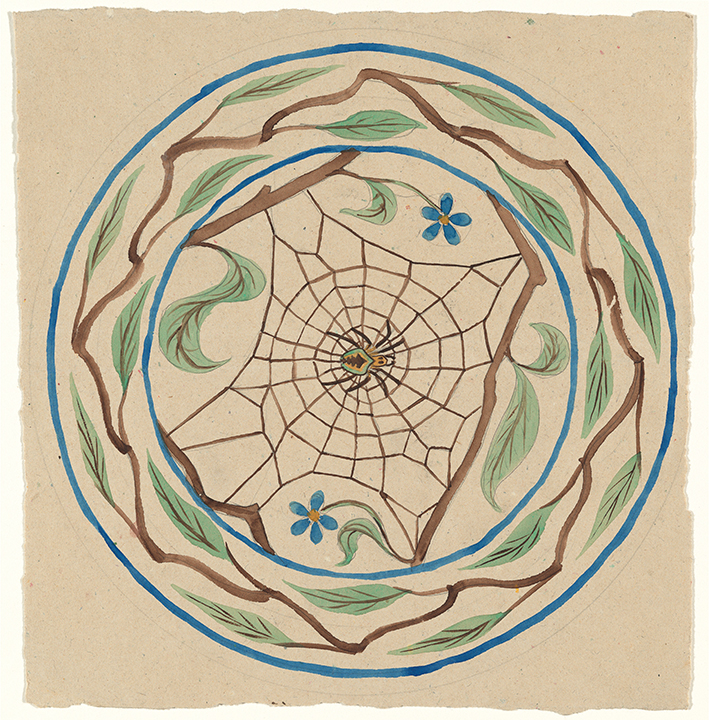Acquisition: M. C. Escher

M.C. Escher
Spider in the Garden (design for a ceramic plate),1920
watercolor and graphite on light brown handmade paper
sheet: 25.9 x 24.5 cm (10 3/16 x 9 5/8 in.)
National Gallery of Art, Washington
Gift of Michael Schiffman in honor of Rock J. Walker/Walker Fine Art
2021.98.2
The National Gallery of Art holds the preeminent public collection of works—31 drawings and 400 prints—outside Europe by M. C. Escher (1898–1972), the master of optical illusion. Thirteen drawings recently given by Michael Schiffman in honor of Rock J. Walker fill chronological gaps, add new subjects, and provide additional context for several of the National Gallery’s prints.
Among the works included in this recent gift are the following highlights: sketches of a nude woman that directly relate to Escher’s early woodcut Seated Female Nude (1921); a delicate watercolor of a spider in its web that is one of only two known designs the artist made for ceramic plates; and several drawings of landscapes and sites that date to Escher’s early travels in Italy—an experience that remained a primary source of his artistic inspiration. Demonstrating his growing fascination with mysterious and disorienting architectural environments, Madonna del Parto, Sutri (1927) portrays the enclosed remains of the colonnade of a Roman era Mithraeum in white chalk on black paper to enhance the cave-like atmosphere of the temple space. Other drawings include two sketches of a woman’s hands (c. 1930) very likely modeled by Escher’s wife Guilietta (Jetta) during the early days of their marriage; the humorous Il Diavolo di Ravello (1931), which shows the devil dressed as a cleric and introduces what would become a recurring devil motif; three design sketches that document Escher’s mathematical approach as he worked out the geometries underlying his most famous visual conundrums in the late 1930s and early 1940s; and Symmetry 131 (1967), comprising black and white flower-filled pentagons and numbering among the 137 fully developed periodic patterns that served as a critical resource for his best-known works.
Contact Information
General Information
For additional press information please call or send inquiries to:
Department of Communications
National Gallery of Art
2000 South Club Drive
Landover, MD 20785
phone: (202) 842-6353
e-mail: [email protected]
Newsletters
The National Gallery also offers a broad range of newsletters for various interests. Follow this link to view the complete list.